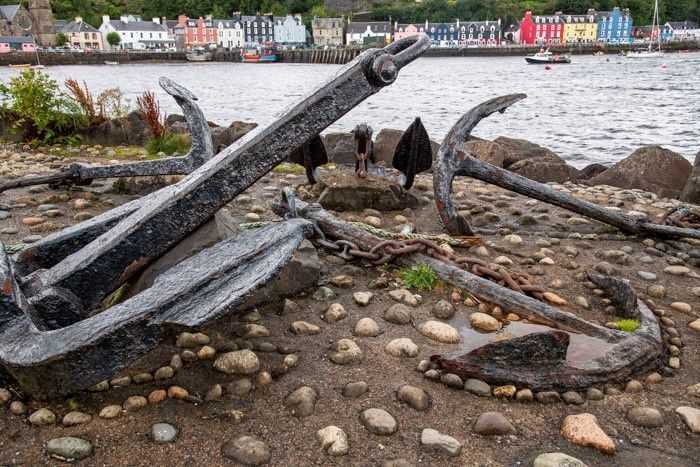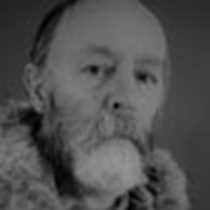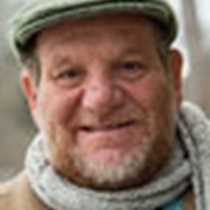Lord of the Glens had been moored overnight in Tobermory, the main village on the Isle of Mull, and this morning we had the opportunity to explore this astonishingly colorful little village, spread gently across a small bay and framed by high cliffs all around. The day was wet and windy but nonetheless the staff offered a choice of shore activities—a long walk out to one of the historic Stevenson lighthouses along the clifftop from where we were docked, a photo walk with National Geographic photographers, and an historic walk through the little village with our shipboard historian.
Departure from the Isle of Mull was at midday, as the weather was brewing with lowering clouds and increasing winds. We wished to make an attempt to dock at the Isle of Eigg before things got too bad. En route, we heard a talk on work with whales in Alaska and the importance of financial and political support to keep essential research programs going. This complemented the Hebridean Whale and Dolphin Trust talk that we heard last night.
The crossing to Eigg was rough and bouncy and before we even arrived, it was clear we would not be able to dock due to the high winds and the exposed nature of the island’s pier. Instead, an executive decision was made to head directly for Inverie, our last stop for the day as per our original schedule.
We arrived in the sheltered and untroubled waters of Loch Nevis before dinner, which gave us the chance for a welcome hike ashore. This is one of the most remote villages in the UK, accessible only by boat, and it is truly stunning in its wild beauty. The weather within the shelter of the surrounding mountains was calm and warm, and several of us enjoyed a good leg stretch in the wild, unkempt forest enclosing the village before returning to the ship for dinner.
The friendly and welcoming atmosphere of the local pub, The Old Forge Inn (most remote pub in the UK), was enjoyed after dinner by several of us before we retired after our full, varied, and interesting day.









